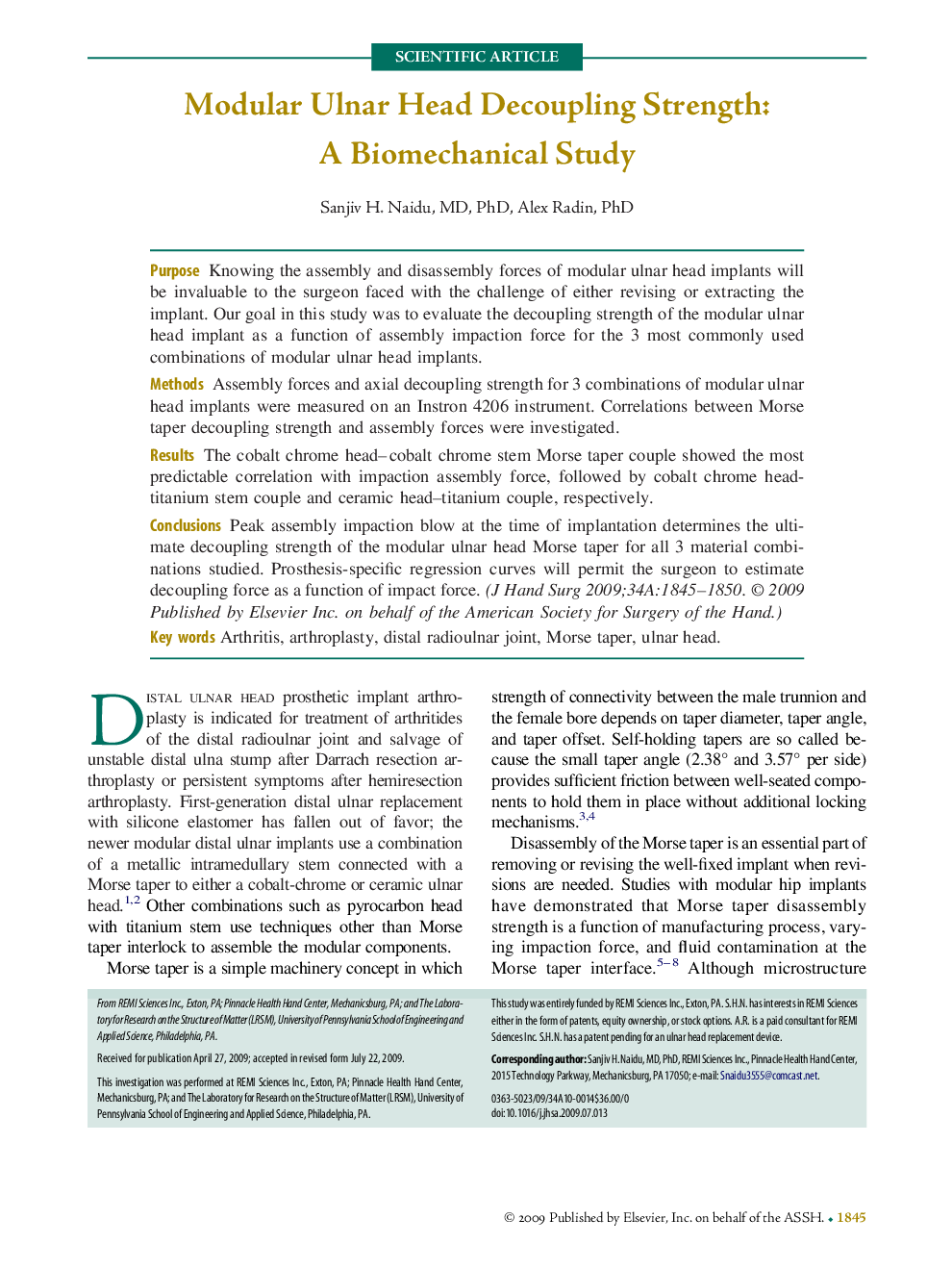| Article ID | Journal | Published Year | Pages | File Type |
|---|---|---|---|---|
| 4070312 | The Journal of Hand Surgery | 2009 | 6 Pages |
PurposeKnowing the assembly and disassembly forces of modular ulnar head implants will be invaluable to the surgeon faced with the challenge of either revising or extracting the implant. Our goal in this study was to evaluate the decoupling strength of the modular ulnar head implant as a function of assembly impaction force for the 3 most commonly used combinations of modular ulnar head implants.MethodsAssembly forces and axial decoupling strength for 3 combinations of modular ulnar head implants were measured on an Instron 4206 instrument. Correlations between Morse taper decoupling strength and assembly forces were investigated.ResultsThe cobalt chrome head–cobalt chrome stem Morse taper couple showed the most predictable correlation with impaction assembly force, followed by cobalt chrome head-titanium stem couple and ceramic head–titanium couple, respectively.ConclusionsPeak assembly impaction blow at the time of implantation determines the ultimate decoupling strength of the modular ulnar head Morse taper for all 3 material combinations studied. Prosthesis-specific regression curves will permit the surgeon to estimate decoupling force as a function of impact force.
